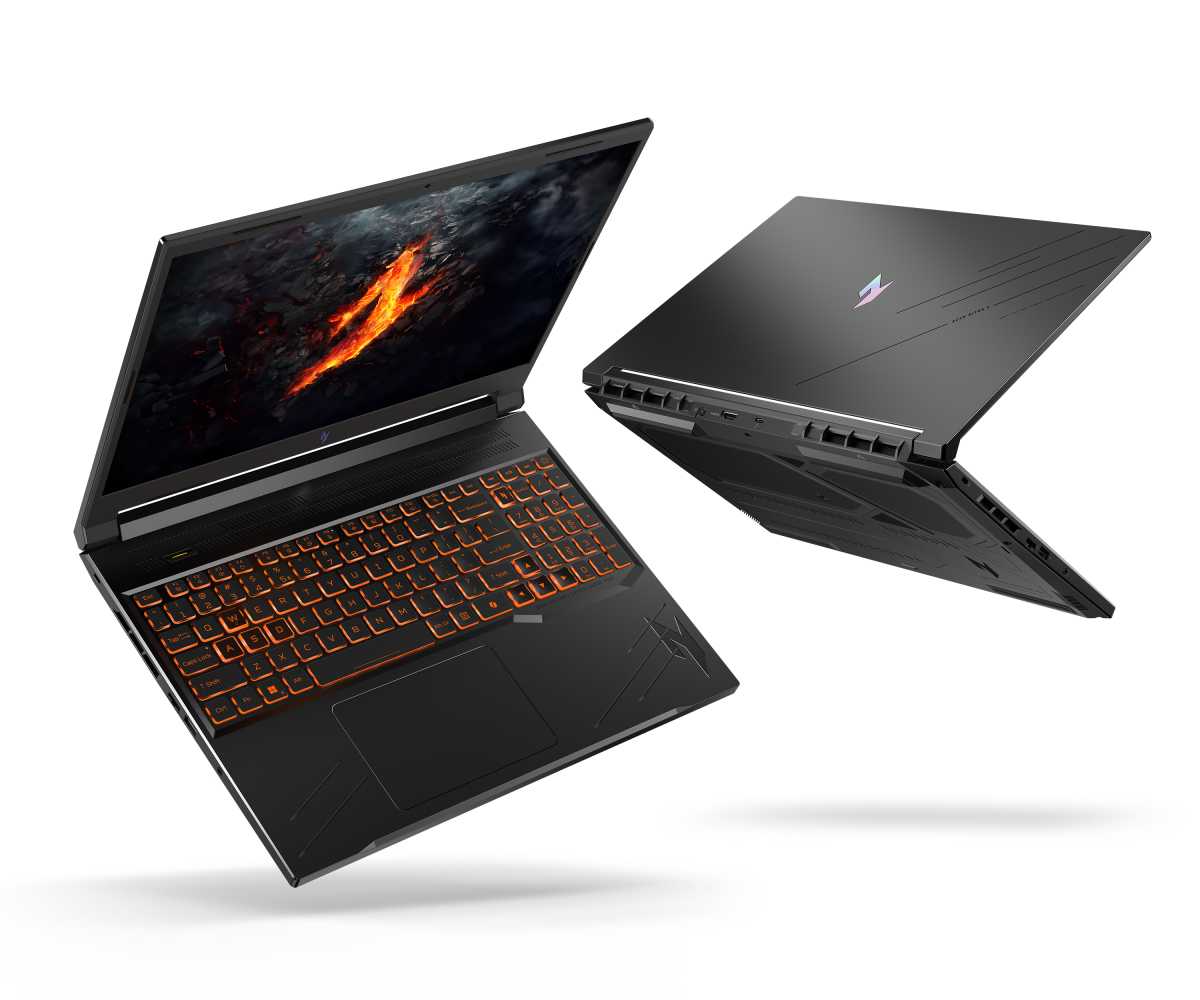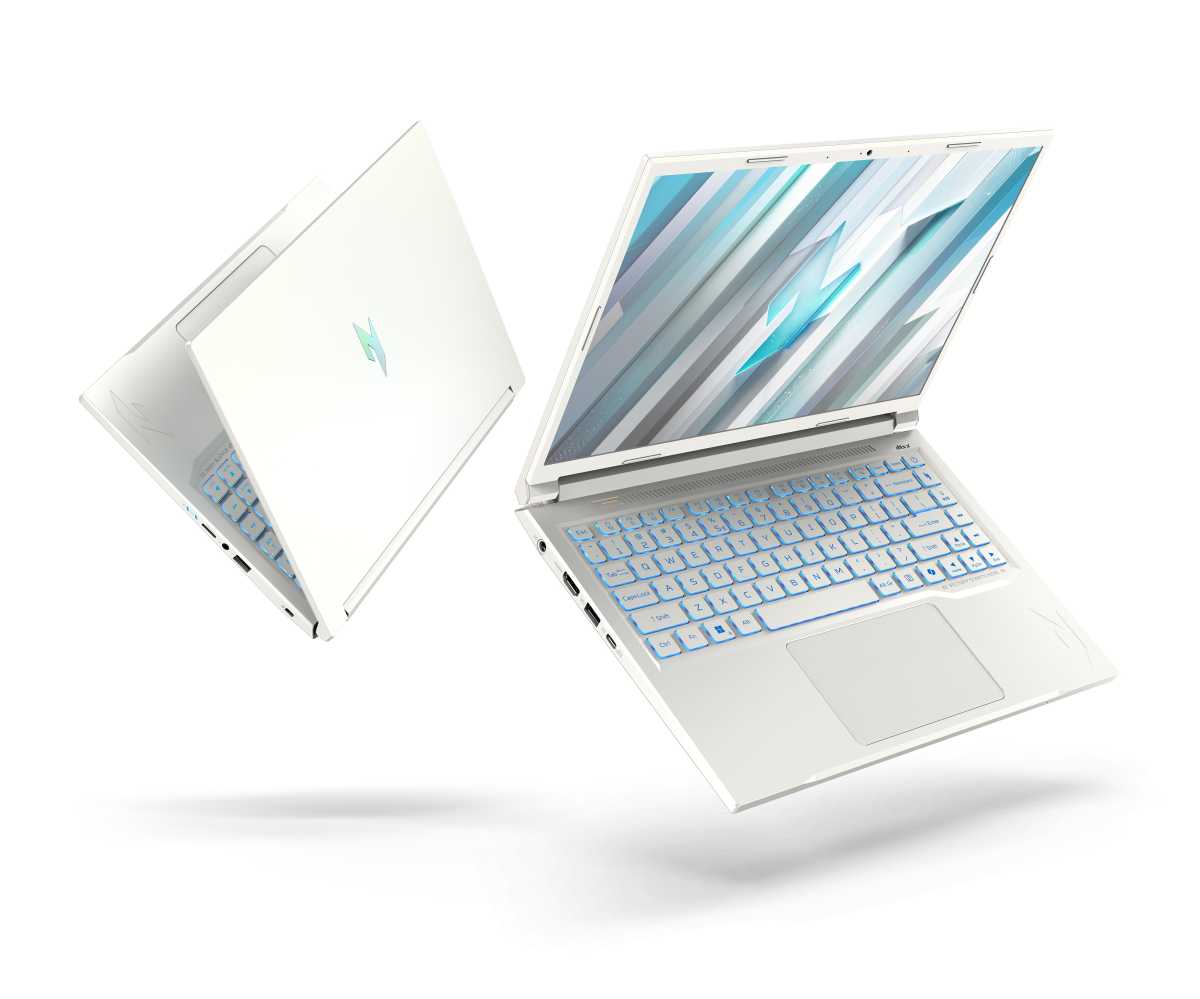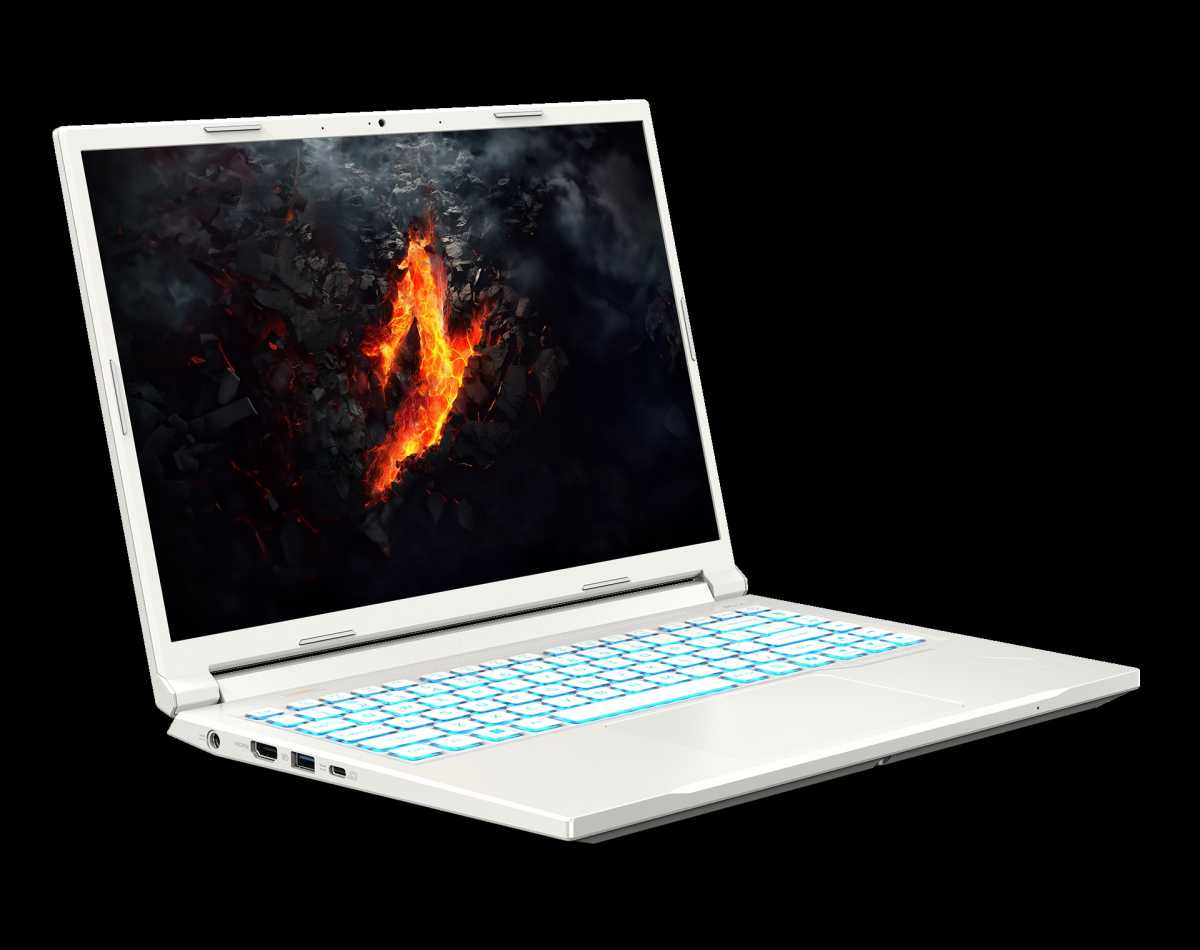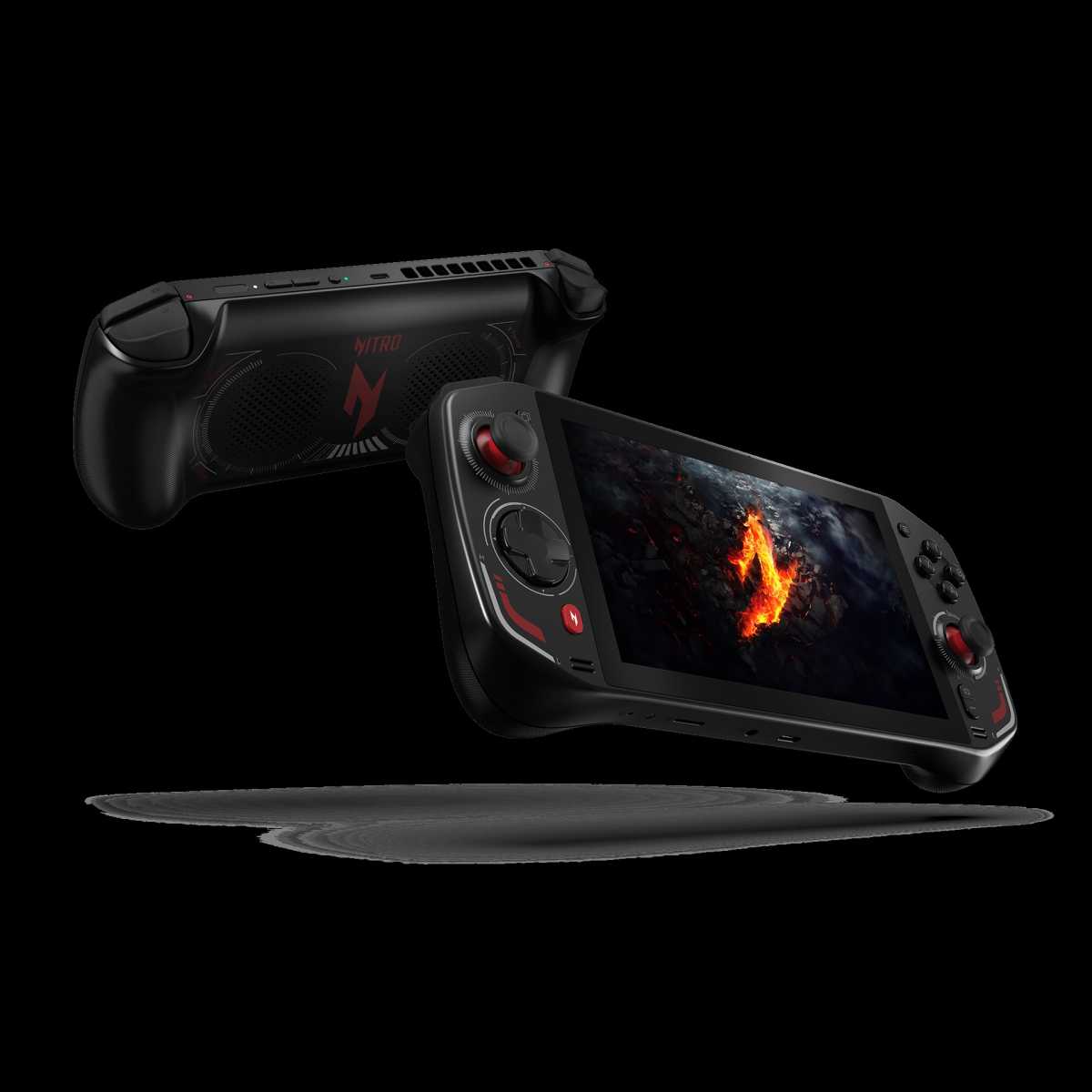
 Image: Acer
Image: Acer
Acer’s Nitro series of gaming laptops is one of the best sellers on the market, probably because it frequently dips below $1,000 despite all kinds of solid specs.
At IFA 2024, Acer is showing off two new Nitro variants, plus its own take on the increasingly crowded portable gaming handheld market. Just call it Acer’s Steam Deck, because everyone else will.
Acer Nitro V gaming laptops
The Acer Nitro V 16 is the refreshed version of one of Amazon’s best-selling laptops, and Acer says it’s “purpose-built for students, entry-level gamers, and multimedia enthusiasts.” It tops out at an Intel 14th-gen Core i7 CPU, an RTX 4060 discrete GPU, 32GB of memory, and 2TB of storage.
That said, most users are probably going to go for the base model which has an Intel Core i5 CPU, RTX 3050 GPU, and 1TB of storage. (No mention of the base RAM on the spec sheet.)


Acer

Acer
Acer
The generous 16-inch screen is 1920×1200 with a respectable 165Hz refresh rate for gaming. But if you’re feeling a little more lush, you can step it up to a 2560×1600 panel with a 180Hz refresh rate. This is a beefy 5.5-pound laptop, but for all that bulk you get a surprisingly small 57 watt-hour battery and just three USB ports (one USB-C, two USB-A), though it does come with a full-sized HDMI port for easy monitor access.
For the newer and sleeker Nitro V 14, Acer went with AMD guts. You can choose between a Ryzen 5 8645HS or a Ryzen 7 8845HS, both of which are new enough for some AI-powered extras. The top-end model will get an RTX 4050 discrete graphics, but cheaper versions will have to make do with an RTX 3050. The base model gets an RTX 2050. (I didn’t even know Nvidia was still making those.)


Acer

Acer
Acer
RAM and storage are the same as the laptop’s bigger brother. Screen resolution is the same for both standard and upgrade models (though they’re naturally smaller on 14.5-inch panels) and both are limited to a 120Hz refresh rate.
Surprisingly, the smaller Nitro V 14 gets one extra port in the form of a microSD card reader that isn’t available on the Nitro V 16. It’s using the same 57-watt-hour battery, but the smaller body lets the Nitro V 14 slim down to just 3.75 pounds — not bad for a gaming laptop.


Acer

Acer
Acer
The Nitro V 14 is coming later this month with a base price of $1,100 while the refreshed Nitro V 16 will arrive in October starting at $1,300. But I personally wouldn’t buy either at launch — expect both of them to get steep discounts on a regular basis, if you have the patience.
Acer Nitro Blaze 7 gaming handheld
Between Asus, Lenovo, MSI, and others, there’s a lot of variety in Steam Deck-style handhelds now. But the only thing that stands out about the Nitro Blaze 7 to me is its distinct lack of, well, distinction.
The 7-inch handheld seems to have shaved down the design to the absolute bare essentials, omitting touch pads, rear programmable buttons, and even the almost requisite LED lighting.


Acer

Acer
Acer
But looking at the gadget in the promotional images, I think I might have spotted a unique selling point. It’s small. Not tiny — none of these things based on laptop hardware are — but at 256mm by 113.5mm, it’s slimmer in every dimension than the Steam Deck, despite offering a newer Ryzen 7 8840HS processor and a slightly bigger 50-watt-hour battery.
The Acer Nitro Blaze 7 offers 16GB of speedy LPDDR5X RAM and “up to” 2TB of SSD storage, though upgrade options weren’t spelled out in the promotional materials. A microSD card slot lets you expand storage without a screwdriver. Its 7-inch screen isn’t any bigger than normal, but at 1080p resolution and 144Hz, it’s both denser and faster than Valve’s original Steam Deck.
Acer says that its Game Space software gives players “quick access to the space” and “their most beloved game titles”… but they all say that, to be frank, and Windows 11 isn’t any easier to manage on these gaming handhelds than it was two years ago.


Acer

Acer
Acer
Acer isn’t saying when the Nitro Blaze 7 will be available or for how much, but given the Nitro branding, I’d expect it to be on the cheaper end of the spectrum. If they can get the base model down to $500, it might be a legitimate contender that even eats into gaming laptop sales.
Author: Michael Crider, Staff Writer, PCWorld

Michael is a 10-year veteran of technology journalism, covering everything from Apple to ZTE. On PCWorld he’s the resident keyboard nut, always using a new one for a review and building a new mechanical board or expanding his desktop “battlestation” in his off hours. Michael’s previous bylines include Android Police, Digital Trends, Wired, Lifehacker, and How-To Geek, and he’s covered events like CES and Mobile World Congress live. Michael lives in Pennsylvania where he’s always looking forward to his next kayaking trip.
Recent stories by Michael Crider:
Windows 11 is (finally) a winner with Steam usersThis Steam-powered mini PC is the Dreamcast 2 we never gotThe PS5 Edge controller is now fully customizable on PCs



